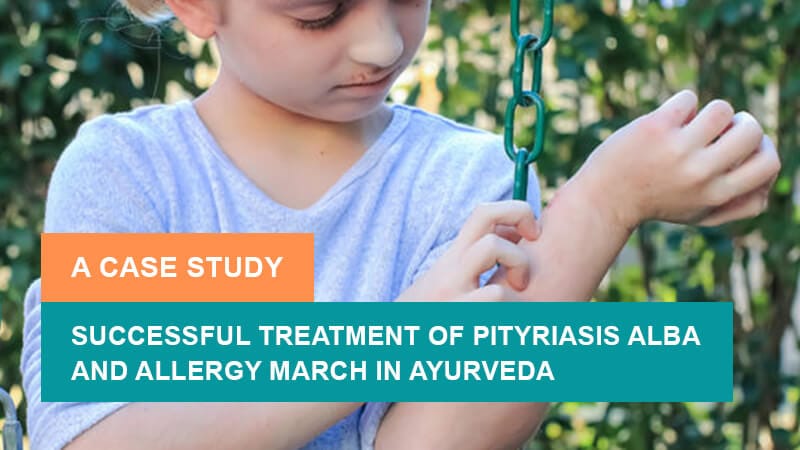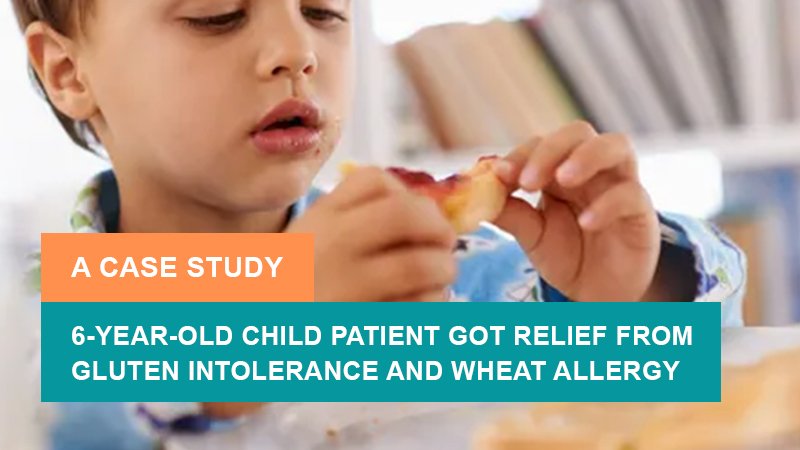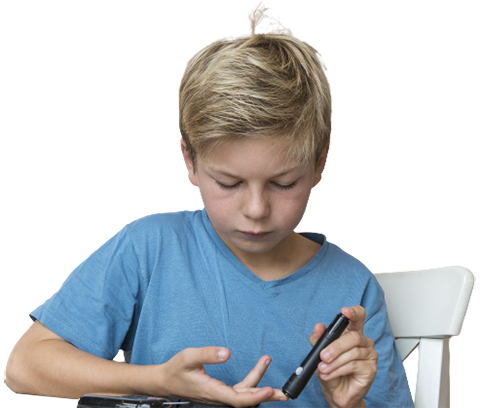On This Page
Type 1 Diabetes in Children-Prameha
वस्तिमाश्रित्यकुरुतेप्रमेहान्दूषित: कफ: l
दूषयित्वावपु: क्लेदस्वेदमेदोरसामिषम् ll
Type 1 Diabetes is the condition in which the child’s body fails to produce the hormone insulin. The condition is also known as Juvenile Diabetes or Insulin-Dependent Diabetes. The unavailable insulin will have to be replaced with an insulin pump or with injections. In Ayurveda reasons, symptoms, complications and treatment of diabetic conditions are explained under Prameha.
Causes of Type 1 Diabetes in Children
The actual cause of type 1 diabetes is not clearly known. But in most people, the immune system wrongly destroys insulin-producing cells in the pancreas. Genetics and environmental factors are believed to have a role in this.
Various risk factors for type 1 diabetes in children are:
- Family history
- Genetic Factors
- Exposure to certain viruses
Ayurveda describes the reasons for occurrence of Diabetes as improper diet, intake of excess amounts of heavy, fatty, sweet food, sedentary life style, improper sleep etc.
Symptoms of Type 1 Diabetes in Children
The major symptoms of type 1 diabetes in children are:
- Increased thirst
- Increased hunger
- Frequent urination, possibly bed-wetting in a toilet-trained child
- Sudden weight loss
- Irritability or behavioural changes
- Fatigue
Ayurveda explains the major symptoms of Diabetes as increased and turbid urine, increased sweating, fatigue, heaviness of body etc.
Ayurvedic Reference of Type 1 Diabetes in Children-Prameha


“Dr. Gupta’s IAFA is the prestigious institution that ensures effective Ayurvedic management for Diabetes in children. Institute of Applied Food Allergy® provides detailed treatment protocol for Juvenile Diabetes”.
IAFA holds your hand to wellness!!
– Dr. Sahil Gupta (B.A.M.S., M.H.A.)
Ayurvedic Allergy Specialist
CEO & Founder of IAFA®
At last, Easier Type 1 Diabetes Management

Trusted by
More than 90,000 Patients

Convenient
at-Home Treatments

9.2 / 10
Customer Satisfaction Score
Ayurvedic Treatment of Type 1 Diabetes in Children
Ayurveda has detailed protocol for the management of Type 1 diabetes in children in children. It includes internal medicines and judicious use of single herbs.
Internal Medicines for Type 1 Diabetes in Children
- Nisakatakadi Kashaya
- Panchatiktaka kashaya
- Muslikhadiradi Kashaya
- Katakakhadiradi Kashaya
- Guggulu tiktaka
- Thriphala choorna
- Navayasa choorna
- Thriphala guggulu gulika
- Kaisoraguggulu gulika
- Kanmada rasayana
- Ayaskriti
Treatment Procedures for Type 1 Diabetes in Children
- Udwartana (Powder massage)
- Vamana (Emesis)
- Virechana (Purgation)
Single Herbs in the Management of Type 1 diabetes in children
- Amalaki (Emblica officinalis)
- Haridra (Curcuma longa)
- Haritaki (Terminalia chebula)
- Kataka (Strychnos potatorum)
- Yava (Hordeum vulgare)
- Lodra (symplocos racemosa)
- Bhadrika (Aerva lanata)
- Khadira (Acacia catechu)
Diet in Type 1 Diabetes in Children
Pathya (Do’s)
- Intake of low calory food
- Food processed with barley
- Brown rice
- Whole wheat
- Oatmeal
- Vegetables
- Intake of fiber containing food
- Light and easily digestible food
- Intake of lesser quantity of food
- Moderate exercise
- Average 8 hours sleep
Apathya (Don’ts)
- White bread
- Pastries
- Chips
- Cookies
- Pastas
- Trans-fat and high-fat animal products.
- Excess food intake
- Taking food just before sleeping
- Computer games & mobile usage for a long time
- Improperly cooked food
- Intake of food before digesting previous meal
- Cold water
- Fried and bakery food
- Bottled soft drinks and artificial juices
- Day sleep
- Over anxiety
- Mental stress of children
Yoga and Pranayama in Type 1 Diabetes in Children
Practice of Yoga helps to improve digestive power and to stimulate pancreas. Regular practice of following Yoga postures will be helpful in reducing sugar level.
- Vakrasansa
- Dhanurasana
- Halasana
- Bakasana
- Ardhamatsyendrasana
- Pavana muktasana
- Vajrasana
- Mayoorasana
Pranayama helps to bring the movement of Vata dosha under control. It helps in maintaining normal sugar level.

Frequently Asked Questions
Question: What are the causes of Type 1 Diabetes?
Answer: Exact reason of Type 1 Diabetes is not clear yet. Various genetic factors as well as life style variations contribute to it.
Question: What are the major symptoms of of Type 1 Diabetes?
Answer: Important symptoms of Type 1 Diabetes are increased urination, excessive thirst, fatigue, excess sweat etc.
Question: Is Ayurvedic treatment effective in Type 1 Diabetes?
Answer: Yes. Ayurveda provides well defined treatment for Type 1 Diabetes through internal and external medicines and treatment that reduces intensity and coplications of Diabetes.
Dr. Gupta’s IAFA is the leading institution in the management of various immune related disorders. IAFA is the most reliable institution that provides ultimate Ayurvedic treatment for your illness.
IAFA holds your hand to wellness!!
Was this Page Helpful?
So IAFA Ayurvedic Management of Type 1 Diabetes in Children is just 3 steps away!

01. Connect With Us
Book an appointment to share queries of your child health.

02. Consult With Us
Consult with Ayurvedic Pediatrician of IAFA®.

03. Root Cause Treatment
Get an accurate diagnosis and treatment for your child.
Type 1 Diabetes – Case Studies
Real Case Studies of Successfully Treated Patients from All Around the World by IAFA Ayurveda®
-

Successful Treatment of Pityriasis Alba and Allergy March in Ayurveda – A Case Study
It is a case study about successful treatment of Pityriasis Alba and…
-

Successful Treatment of Gallstones (Cholelithiasis) with Ayurvedic Medications – A Case Study
It is a case study about the successful treatment of Gallstones (Cholelithiasis)…
-

48-Year-Old Male Patient Got Relief from Chronic Aspergillosis of Paranasal Sinuses – A Case Study
Fungal infections can be treated with a high success rate by various…
-

6-Year-Old Child Patient Got Relief from Gluten Intolerance and Wheat Allergy – A Case Study
It is a case study of a 6-year-old Child Patient who got…
Read More Articles
-
-
-

Attention Deficit Hyperactivity Disorder – ADHD (Vatika Unmada)
So IAFA Root-Cause Treatment of Your Attention Deficit Hyperactivity Disorder is Just…










